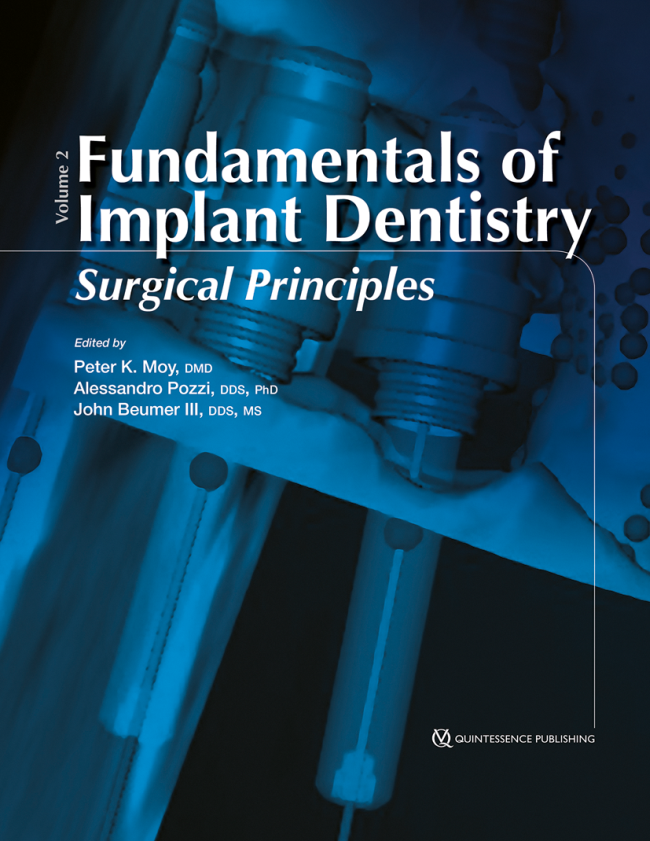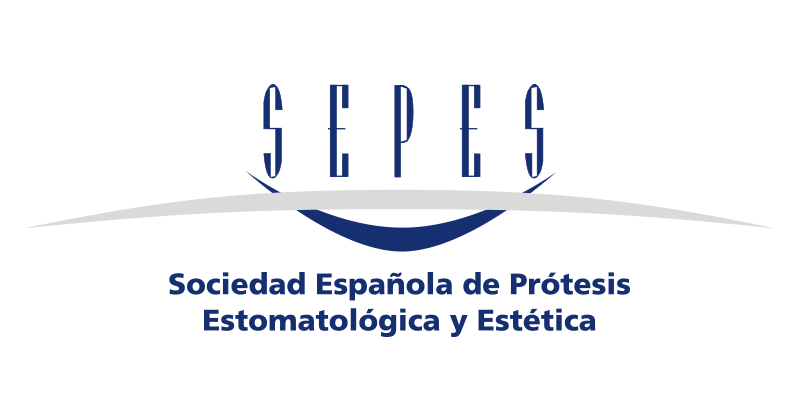The International Journal of Oral & Maxillofacial Implants, Pre-Print
DOI: 10.11607/jomi.11238, PubMed-ID: 401789983. Apr. 2025,Seiten: 1-22, Sprache: EnglischPozzi, Alessandro / Carosi, Paolo / Lorenzi, Claudia / Chow, James / Wang, Hom-Lay / Gallucci, German O.Objectives: To systematically analyze the accuracy of autonomous dental implant robotic (ADIR) surgery for dental implant placement. Materials and Methods: PubMed, Embase, and Cochrane CENTRAL were searched on February 21, 2024. Any clinical studies with exception of case reports, assessing ADIR accuracy by superimposing pre-op digital planning with post-op CBCT, were included. The risk of bias was assessed, and a meta-analysis was performed using a random-effect model to evaluate linear and angular deviations between planned and placed implants. Results: Data from 6 clinical studies reporting ADIR accuracy in 96 patients with 299 dental implants included (102 in 69 partial edentates, 197 in 27 complete-arch scenarios). The meta-analysis at implant level reported a mean overall accuracy of ADIR of 0.60 mm 95% CI [0.5133; 0.6965] at platform, 0.63 mm 95% CI [0.5663; 0.6909] at apex, and 1.242° 95% CI [1.2182; 1.6320] of angular deviation. ADIR accuracy resulted significantly higher than s- and d-CAIS. Conclusion: Within the limitations of this review, autonomous dental implant robotic surgery has shown to be feasible for placing implants in both partially and completely edentulous patients, achieving consistent mean linear and angular deviations of approximately 0.6 mm and 1.40°, respectively. However, clinical practicality of autonomous dental implant robotic surgery remained cumbersome, with well-trained operators needed to plan and assist ADIR procedures and a technical expert providing backup control.
Schlagwörter: dental implant, implant guides, accuracy, autonomous dental implant robotic, robotic surgery, digital dentistry, meta-analysis
International Journal of Computerized Dentistry, 1/2023
ScienceDOI: 10.3290/j.ijcd.b2599297, PubMed-ID: 35072425Seiten: 19-28, Sprache: Englisch, DeutschRetana, Luciano / Nejat, Amir H. / Pozzi, AlessandroZiel: Ziel war es, die Richtigkeit von sieben verschiedenen Intraoralscannern (IOS) bei der Erfassung digitaler Ganzkieferabformungen mit und ohne Verblockung der Scankörper zu untersuchen.
Material und Methode: Zunächst wurde ein Polyurethanmodell eines unbezahnten Unterkiefers mit vier Implantatanalogen hergestellt, von dem mithilfe eines Laborscanners ein Referenzscan erstellt wurde. Das Referenzmodell wurde mit allen sieben untersuchten IOS (Kontrollgruppen, n = 10 pro Scanner) gescannt und nach Verblockung der Scankörper erneut gescannt (Testgruppen, n = 10 pro Scanner). Jeder Scan wurde als STL-Datensatz exportiert und in eine Metrologie-Software (Geomagic Control X) übertragen. Um die Richtigkeit zu messen, wurden vier Punkte (A, B, C und D) auf den Scankörpern bestimmt und die Distanzen zwischen Punkt A und den anderen Punkten gemessen (DAB, DAC und DAD). Die Messwerte wurden mittels Kolmogorov-Smirnov-Test und Wahrscheinlichkeitsnetz auf Normalverteilung getestet. Der Vergleich der Richtigkeiten erfolgte mit einer dreifaktoriellen Varianzanalyse. Zudem wurden Paarvergleiche mit dem Post-hoc-Tukey-Test und gepaarten t-Test durchgeführt. Es wurden zweiseitige Tests verwendet und das Signifikanzniveau war bei 5 % gesetzt.
Ergebnis: Die Verblockung der Scankörper verbesserte die Richtigkeitswerte der Digitalscans, während die Vergrößerung des interimplantären Abstandes diese verringerte. Es fand sich eine signifikante Assoziation zwischen den Richtigkeitswerten und den drei getesteten Variablen: Verblockung der Scankörper, IOS-Typ, interimplantärer Abstand (p < 0,001).
Schlussfolgerung: Aus den vorliegenden Ergebnissen ist zu schließen, dass eine Verblockung der Scankörper – dank Verbesserung der Referenzstrukturen für das Stitching – die Richtigkeit digitaler Ganzkiefer-Implantatabformungen unabhängig vom IOS-Typ oder dem interimplantären Abstand verbessert.
Schlagwörter: Dentalimplantat, Digitalscan, Intraoralscanner, Scankörper, Verblockung, Richtigkeit
The International Journal of Oral & Maxillofacial Implants, 5/2022
DOI: 10.11607/jomi.9710Seiten: 1003-1025, Sprache: EnglischDel Fabbro, Massimo / Pozzi, Alessandro / Romeo, Davide / de Araújo Nobre, Miguel / Agliardi, EnricoPurpose: To evaluate the performance of fixed complete dental prostheses supported by axial and tilted implants after at least 3 years of follow-up.
Materials and Methods: An electronic search plus a hand search up to April 2021 was undertaken. Clinical studies were selected using specific inclusion criteria, independent of the study design. The main outcomes were cumulative implant survival rate, marginal bone level changes, and complications, after ≥ 3 years of follow-up. The difference in outcomes between axial and tilted implants and between the maxilla and mandible was evaluated using meta-analysis and the Mantel-Cox test.
Results: Out of 824 articles retrieved, 24 were included. In total, 2,637 patients were rehabilitated with 2,735 full prostheses (1,464 maxillary, 1,271 mandibular), supported by 5,594 and 5,611 tilted and axial implants, respectively. In a range between 3 and 18 years of follow-up, 274 implants failed. The cumulative implant survival rate was 93.91% and 99.31% for implants and prostheses, respectively. The mean marginal bone level change was moderate, exceeding 2 mm in only two studies. Marginal bone loss was significantly lower around axial compared with tilted implants (P < .0001), whereas it was not affected by arch (maxilla vs mandible; P = .17).
Conclusion: Fixed complete dental prostheses supported by tilted and axially placed implants represent a predictable option for the rehabilitation of edentulous arches. Further randomized trials are needed to determine the efficacy of this surgical approach and the remodeling pattern of marginal bone in the long term.
Schlagwörter: axial implants, immediate loading, mandible, marginal bone loss, maxilla, tilted implants
International Journal of Periodontics & Restorative Dentistry, 4/2021
Seiten: 521-529, Sprache: EnglischPozzi, Alessandro / Tabanella, Giorgio / Guida, Antonio / Hugo, Oliver / Authelain, Claude / Scheyer, E Todd / McGuire, Michael K / Lipton, DavidThis multicenter retrospective study assessed clinical and radiographic outcomes of 686 parallel-walled conical-connection implants consecutively placed in 281 partially and fully edentulous patients. Implants were placed in healed and postextraction sites and subjected to immediate, early, or delayed loading. With a mean follow-up of 10 ± 6.7 months, the implant survival rate was 97.7%, while mean marginal bone loss was 0.7 ± 1.5 mm between implant placement and 1 year (n = 290 implants) and 0.1 ± 0.6 mm between 1 and 2 years (n = 72 implants). Advanced patient age and longer implants were associated with fewer implant failures, while different crestal positions at implant placement were not associated with differences in implant survival or changes in marginal bone level over time.
International Journal of Periodontics & Restorative Dentistry, 6/2018
DOI: 10.11607/prd.3778, PubMed-ID: 30304068Seiten: 791-798, Sprache: EnglischSalama, Maurice A. / Pozzi, Alessandro / Clark, Wendy Auclair / Tadros, Marko / Hansson, Lars / Adar, PinhasInadequate restorative space can result in mechanical, biologic, and esthetic complications with full-arch fixed implant-supported prosthetics. As such, clinicians often reduce bone to create clearance. The aim of this paper was to present a protocol using stacking computer-aided design/computerassisted manufacturing (CAD/CAM) guides to minimize and accurately obtain the desired bone reduction, immediately place prosthetically guided implants, and load a provisional that replicates predetermined tissue contour. This protocol can help clinicians minimize bone reduction and place the implants in an ideal position that allows them to emerge from the soft tissue interface with a natural, pink-free zirconia fixed dental prostheses.
International Journal of Oral Implantology, 5/2016
SupplementPubMed-ID: 27314119Seiten: 135-153, Sprache: EnglischPozzi, Alessandro / Polizzi, Giovanni / Moy, Peter K.Aim: To systematically scrutinise the scientific literature to evaluate the accuracy of computer-guided implant placement for single missing teeth, as well as to analyse the eventual clinical advantages and treatment outcomes.
Material and methods: The electronic and manual literature search of clinical studies published from January 2002 up to November 2015 was carried out using specified indexing terms. Outcomes were accuracy; implant and prosthetic failures; biological and mechanical complications; marginal bone loss (MBL); sulcus bleeding index (SBI); plaque score (PS); pink esthetic score [PES]; aesthetic and clinical outcomes.
Results: The search yielded 1027 relevant titles and abstracts, found during the electronic (n = 1020) and manual (n = 7) searches. After data extraction, and screening of titles, abstracts, and full-texts, 32 studies fulfilled inclusion criteria and were included in the critical review: two randomised controlled clinical trials, six prospective observational single cohort studies, one retrospective observational study, three in vitro comparative studies, 10 case reports and 10 systematic reviews. A total of 209 patients (18 to 67 years old) were treated with 342 implants using computer-guided implant surgery. The follow-up ranged from 12 to 52 months. The cumulative survival rate ranged from 96.5% to 100%. Eleven implant planning softwares and guided surgery systems were used and evaluated.
Conclusions: Computer-guided surgery for single missing teeth provides comprehensive treatment planning, reliable implant positioning, favourable clinical outcomes and aesthetics. A tooth-supported template for the treatment of single missing teeth results in greater accuracy of implant positioning than with mucosa-supported or bone-supported templates. The limited scientific evidence available suggests that guided surgery leads to implant survival rates as good as conventional freehand protocols. Computer-guided surgery implies additional costs, that should be analysed in terms of cost-effectiveness, considering the reduction of surgery time, postoperative pain and swelling, as well as, the potential increased accuracy. Long-term randomised clinical trials are eagerly needed to investigate the clinical performance of guided surgery in partially edentate patients.
Schlagwörter: computer-assisted surgery, computer guided surgery, single-tooth implant
International Journal of Oral Implantology, 5/2016
SupplementPubMed-ID: 27314123Seiten: 163-172, Sprache: EnglischMoy, Peter K. / Nishimura, Grant H. / Pozzi, Alessandro / Danda, Anil K.Aim: This study evaluated the efficacy of replacing single missing teeth in the posterior quadrants of the maxilla and/or mandible with an implant-supported dental prosthesis.
Material and methods: Three scientific literature databases - Medline (Pubmed), Ovid Medline and Cochrane Central Register of Controlled Trials (CENTRAL) - were used to perform a search of publications over a period from 1985 to 2014. One hundred and forty one (141) articles were reviewed; 36 articles met the inclusion criteria and were included in the final review.
Results: The survival rates, success rates and mean bone loss for immediate implant placement were 96.9%, 100% and 0.85 mm, respectively. The survival rates, success rates and mean bone loss for delayed implant placement were 96.8%, 94.1% and 0.55 mm respectively. The survival rate, success rate and the mean bone loss in studies comparing immediate versus delayed implant placement showed 96.8% and 96.3%, 85.8% and 93.3%, and 0.57 ± 0.57 mm and 0.55 ± 0.37 mm, respectively.
Conclusion: The prognosis for single molar implants provides a viable treatment option for replacing a single missing tooth in the posterior quadrants of the maxilla and mandible. There does not appear to be a significant difference in the survival rates of immediately placed implants compared with delayed implant placement. However, the success rates were slightly higher with delayed loading protocols than immediate loading protocols.
Schlagwörter: delayed loading, delayed placement, immediate loading, immediate placement, posterior quadrant, single implant
The International Journal of Oral & Maxillofacial Implants, 1/2016
DOI: 10.11607/jomi.4061, PubMed-ID: 26800171Seiten: 142-152, Sprache: EnglischPozzi, Alessandro / Mura, PriamoPurpose: To report the up-to-2-year outcomes of the immediately loaded novel variable-thread tapered implant with an internal conical connection and built-in platform shifting.
Materials and Methods: Sixtyfour partially and completely edentulous patients were referred to two private centers for implant treatments between December 2010 and June 2012. Clinical and radiographic parameters were assessed retrospectively; the outcomes were implant and prosthetic failure, marginal bone remodeling, and complications.
Results: One hundred forty-eight NobelReplace Conical Connection implants were placed in both postextraction sockets (n = 67) and healed sites (n = 81). One maxillary postextractive implant failed before the definitive prosthesis delivery, accounting for a cumulative success rate of 99.3%. No definitive prostheses failed. A mean marginal bone loss (MBL) of 0.42 ± 1.16 mm and 0.71 ± 1.53 mm was observed between implant placement and the 1-year (n = 147) and 2-year (n = 74) follow-up periods, respectively. In the postextraction sites, the mean MBL was 0.28 ± 0.39 mm and 0.69 ± 0.75 mm at the 1-year (n = 66) and 2-year (n = 50) follow-up periods; in the healed sites, the mean MBL was 0.51 ± 0.88 mm (n = 81) and 0.62 ± 0.80 mm (n = 24), respectively. At the 2-year follow-up session (n = 74), bleeding on probing was 8.3%, and the plaque score was 15.7%. No technical complications were observed. One biologic complication (0.8%) was reported.
Conclusion: Within the limitations of this study and the relatively short follow-up, the immediately loaded NobelReplace Conical Connection implants demonstrated good treatment outcomes with regard to implant and prosthetic survival rate, MBL, and soft tissue conditions, in both postextraction and healed sites.
Schlagwörter: conical connection, dental implant, immediate loading, platform switching, postextraction
International Journal of Oral Implantology, 1/2015
PubMed-ID: 25738179Seiten: 51-63, Sprache: EnglischPozzi, Alessandro / Tallarico, Marco / Moy, Peter K.Purpose: To evaluate the clinical and radiological performance of an immediately loaded novel implant design over a 3-year period.
Materials and methods: This prospective study includes 54 consecutive partially edentulous patients treated between December 2010 and October 2011. Outcome measures were: implant and prosthetic failures; biological and mechanical complications; marginal bone loss (MBL); sulcus bleeding index (SBI); and plaque score (PS).
Results: A total of 118 (29 narrow platform, 70 regular platform and 19 wide platform) NobelReplace Conical Connection implants were placed in both post-extraction sockets and healed sites and immediately loaded. The mean insertion torque was 63.4 ± 7.1 Ncm. One hundred out of 118 implants (84.7%) were inserted with a torque ranging between 55 and 70 Ncm. Each patient received a single prosthesis. At the 3-year follow-up, no patient dropped out and only two post-extractive implants failed (1.7%) in two patients (3.7%). The only complication (1.9%) observed was an event of periimplantitis, consisting of a mean mesiodistal peri-implant bone loss of 3.2 mm reported in a healed site of a smoker patient at the 2-year follow-up examination. No prosthesis failures were detected. The cumulative mean MBL between implant placements at the 3-year follow-up was 0.68 mm (95% CI: 0.44, 0.92). At the 3-year follow-up session, the SBI and PS were 5.7% and 15.4%, respectively.
Conclusions: The NobelReplace Conical Connection implant can be considered as a valuable treatment option for immediate implant placement and loading in the partially edentulous patients over a 3-year period. Insertion torques ranging between 55 and 70 Ncm are not detrimental to osseointegration.
Schlagwörter: conical connection, dental implant, immediate loading, platform switching, postextractive
International Journal of Oral Implantology, 3/2014
PubMed-ID: 25237668Seiten: 229-242, Sprache: EnglischPozzi, Alessandro / Tallarico, Marco / Marchetti, Massimiliano / Scarfò, Bruno / Esposito, MarcoPurpose: To compare planning and patient rehabilitation using a 3D dental planning software and dedicated surgical guides with conventional rehabilitation of partially or fully edentulous patients using flapless or mini-flap procedures and immediate loading.
Materials and methods: Fifty-one fully or partially edentulous patients requiring at least 2 implants to be restored with a single prosthesis, having at least 7 mm of bone height and 4 mm in bone width, had their implant rehabilitation planned on three-dimensional (3D) cone beam computed tomography (CBCT) scans using a dedicated software. Afterwards they were randomised according to a parallel group study design into two arms: computer-guided implant placement aided with templates (computer-guided group) versus conventional implant placement without templates (conventional group) in three different centres. Implants were to be placed flapless and loaded immediately; if inserted with a torque over 35 Ncm with reinforced provisional prostheses, then replaced, after 4 months, by definitive prostheses. Outcome measures, assessed by masked assessors were: prosthesis and implant failures, complications, peri-implant bone level changes, number of treatment sessions, duration of treatment, post-surgical pain and swelling, consumption of pain killers, treatment time, time required to solve complications, additional treatment cost, patient satisfaction. Patients were followed up to 1 year after loading.
Results: Twenty-six patients were randomised to the conventional treatment and 25 to computerguided rehabilitation. No patient dropped out. One provisional prosthesis failed, since one of the two supporting implants failed 11 days after implantation in the conventional group (P = 1.0). Four patients of the conventionally loaded groups experienced one complication each, versus five patients (6 complications) in the computer-guided group (P = 0.726). There were no statistically significant differences between the two groups for any of the tested outcomes with the exception of more postoperative surgical pain (P = 0.002) and swelling (P = 0.024) at conventionally treated patients.
Conclusions: When treatment planning was made on 3D CBTC scan using a dedicated software, no statistically significant differences were observed between computer-guided and a free-hand rehabilitations, with the exception of more postoperative pain and swelling at sites treated freehand because more frequently flaps were elevated.
Schlagwörter: computer-guided surgery, dental implants, flapless surgery, immediate loading
Conflict of interest statement: This trial was completely self-funded and there are no conflicts of interests.









